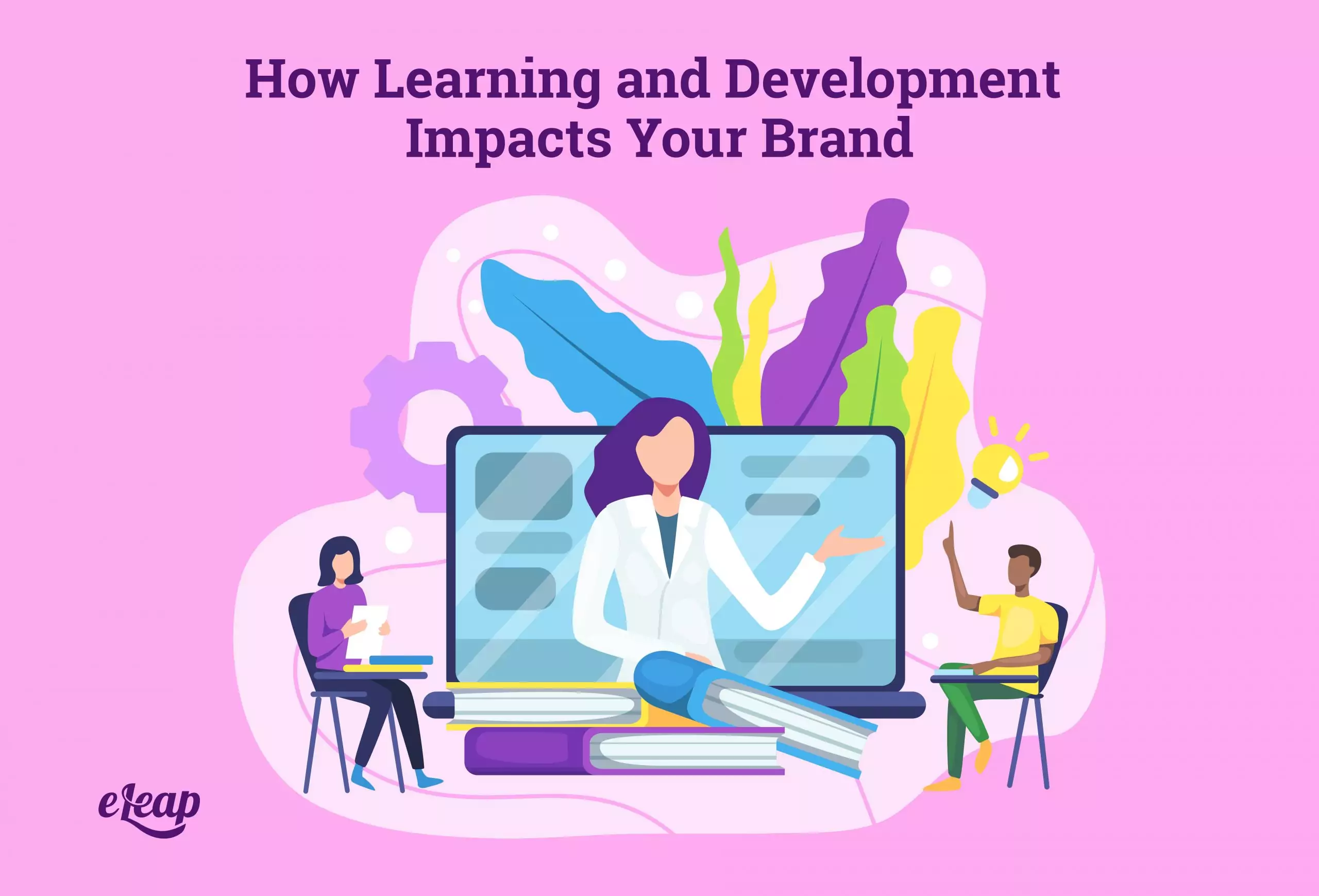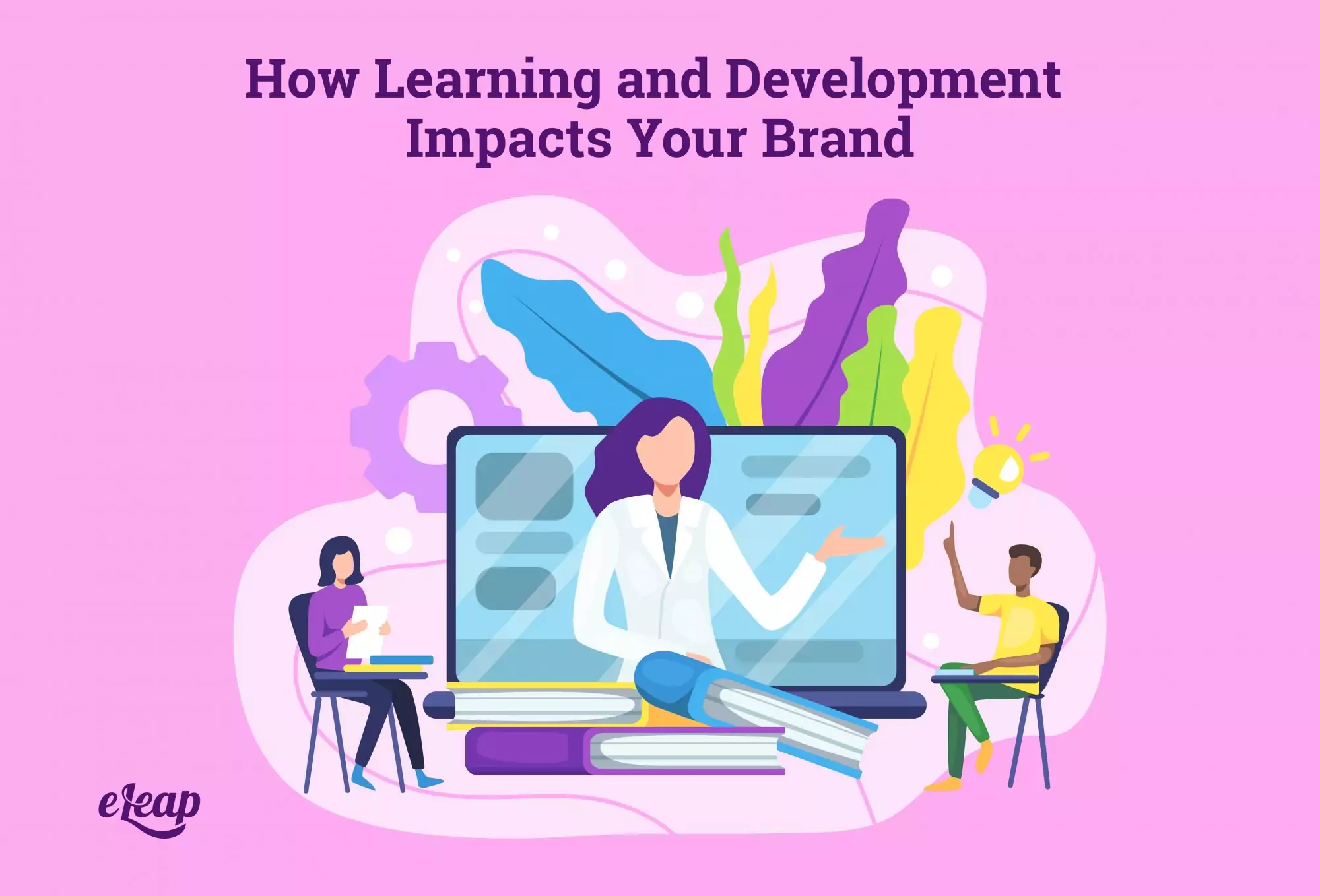How Learning and Development Impacts Your Brand

Branding is an immensely complicated thing. Entire courses are taught on how to establish a brand and differentiate yourself from competitors. However, those usually focus on just one side of the coin – your brand as perceived by customers or clients. There’s another side to consider – your brand as perceived by your employees.
This is called “employer brand”, and it is distinct from, but tied to, your customer-facing brand. Learning and development is a critical consideration in employer brand development. How does it impact your brand-building efforts, though?
In truth, L&D is intimately connected with your employer brand and plays a central role in everything from employee engagement to your ability to attract and retain talent.

The Truth about Employer Brands
According to a report from McKinsey, “An organization’s brand is one of its most important assets and conveys a great deal about the company’s success in the market, financial strengths, position in the industry, and products and services. Investments in L&D can help to enhance a company’s brand and boost its reputation as an employer of choice. As large segments of the workforce prepare to retire, employers must work harder to compete for a shrinking talent pool. To do so, they must communicate their brand strength explicitly through an employer value proposition.”
Now, let’s unpack that explanation a bit more. Chances are good that you’ll find your L&D initiatives are already affecting your brand, whether for good or ill.
Why Bother Being an Employer of Choice?
One of the central tenets of the argument above is that organizations need to take steps to become so-called employers of note. Why is that? As long as people need a job, applicants will come knocking on your door, right? Well, yes and no.
First, understand that while the global population continues to grow, it’s not evenly spread across the planet. Many Western nations, including the United States, are actually seeing population declines. Couple that with the growing exodus of Baby Boomers from the workforce and you have a startling situation – there are fewer people out there from which employers can choose.
Now, what happens when supply dwindles but demand increases? It’s about more than the cost going up, as capitalism implies. It’s about increasing scarcity. Some might have that thing, but others will have to do without. That’s a scary picture when you apply it to employment.
Simply put, employers are forced to compete to hire from an ever-shrinking pool of talent. That means you must have a way to stand out from your competitors, not just to your customers, but to potential new employees.
- What is it that makes new hires actively seek you out as an employer?
- What differentiates a career with your organization from one with another firm?
- What are your strengths as an employer?
If you cannot answer those questions, it’s past time to begin working on your employer brand, and chances are good that you’re already struggling to attract and retain top talent.
What Is Your Employer Proposition?
The answers to the questions posed previously form what is called your employer proposition. It’s a distillation of why someone would take a job with your firm as opposed to going elsewhere. Employers can no longer count on filling open positions simply because people need jobs. Workers today are empowered – they’re in demand and they know it – and are increasingly seeking out employers that connect with them in ways that differ from previous generations, including:
- Provide opportunities for growth and development
- Support them in learning new skills
- Connect with them in terms of values and ethics
- Support local communities
- Practice corporate responsibility
While not all of these tie in with learning and development, many do. Additionally, all of them go into creating your employer proposition – what you bring to the table as an employer today is even more important than what employees can offer your organization. You must have a defined “why” to first attract and then retain top talent.
How Does L&D Fit In Here?
It might be difficult to see how learning and development fits into the development of an employer brand and proposition. However, when you delve deeper into what today’s workers demand from their employers, it becomes easier to connect the dots.
Growth, Development, and Skills Mastery
Learning and development is, well, all about growth, development, and skills mastery, three of the things that today’s workers value and seek out the most when it comes to finding employment. Therefore, it follows that companies with strong L&D initiatives will win the lion’s share of top talent.
It makes sense. These employers are providing workers with:
- Not just a paycheck, but a way to improve themselves both personally and professionally
- Not just a job today, but a career path that will carry them forward into the future
- Not just knowledge of how to carry out today’s job duties, but skills mastery that helps set them apart, is fulfilling, and brings value to the workplace
The Bigger Picture
So, how does learning and development impact brand development? Simply put, it allows you to create a brand synonymous with professional growth and development. It helps to highlight your strengths as an employer and provides important differentiation when workers compare your organization to other potential hirers.
Of course, creating a robust learning and development strategy is more easily said than done. You’ll face several hurdles here, and one of those is identifying the right platform to support your L&D efforts. Modern learning management systems (LMSs) provide critical accessibility, ease of use, and even the ability to create your own branded content, but they are not all the same.
At eLeaP, we’re proud to offer one of the most advanced LMS options on the market. Whether you’re just now attempting to establish your employer brand or you’re looking for something that does a better job connecting your learners with content, we’re here to help. Contact us today to learn more.